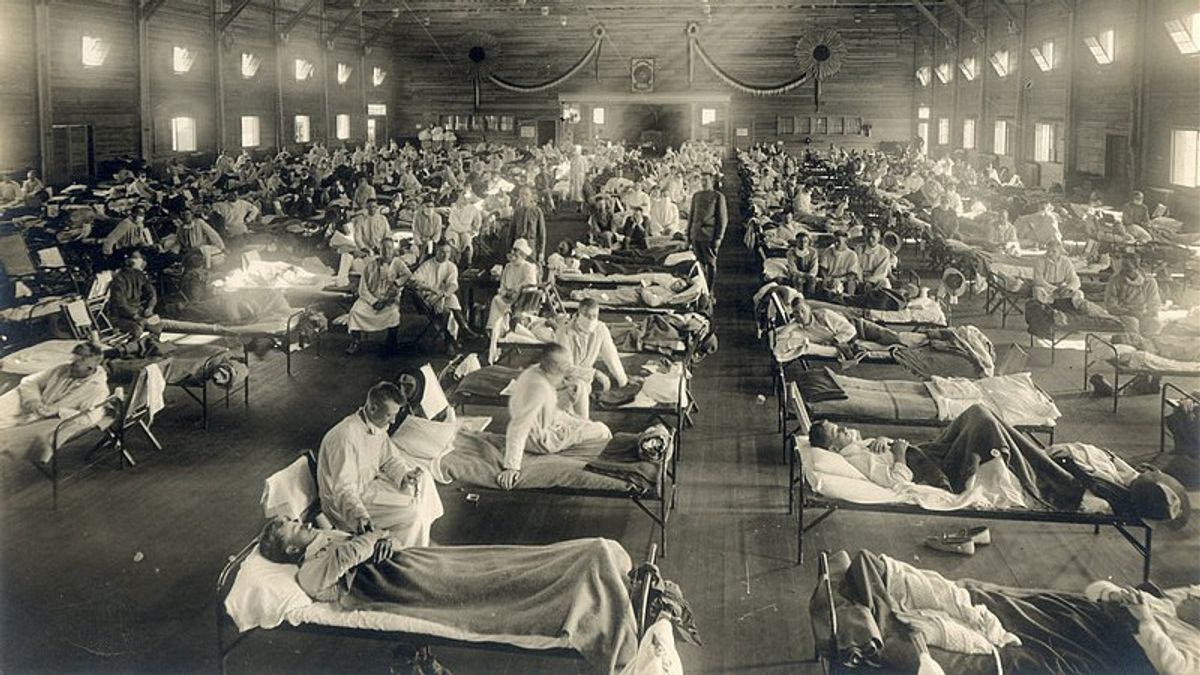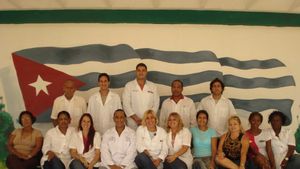JAKARTA History today, 106 years ago, March 4, 1918, the strange flu (later known as the Spanish Flu) was first detected by an army cook, Albert Githell at Funston Kansas Camp, United States (US). The flu then spread throughout the world as US troops participated in World War I.
Previously, Camp Funston was widely known as a training camp that facilitated dozens of US troops. At that time the entire camp was busy with all kinds of training schemes in the context of World War I and strange flu spread.
Many people think that those who are in a weak condition can easily catch the virus. At first glance, there is nothing wrong. However, that assumption is not entirely big. The pandemic does not recognize physical matters, let alone religion.
This condition can be seen from the beginning of the presence of the influenza virus in the United States. Initially, several local doctors detected a strange flu virus in January 1918. However, the warning was not pleasing.
The first incident, which was considered the entry point for the Spanish Flu, first emerged from the complaint of a military cook, Albert Githell on March 4, 1918. He complained of having symptoms of sore throat, fever, runny nose, and headaches. Local doctors did not even think anything was strange. Albert tried to be treated intensively. Malang cannot be denied. In fact, those who have the same symptoms as Albert kept popping up.
In fact, there are 1,000 soldiers affected by strange flu in Funston Camp, which incidentally is known as a training center for 56,222 US soldiers. The flu started to infect the respiratory tract. Dozens of people are known to have died because of the strange virus. Finally, the day (March 4, 1918) Albert contracted the world's flu as the first case of Spanish Flu.
Problems arise. The presence of the flu was ignored by the US military. The information at that time was trying to be hidden. This is because the spread of information related to disease outbreaks can reduce the spirit of US soldiers who are actively facing World War I.
It was Camp Funston that made the virus spread so massively. This is inseparable from the swift flow of soldiers coming in and out of the camp to Europe. They also act as active carriers' of the influenza virus. From Funston Camp, influenza virus spread rapidly to New Jersey, South Carolina, Colorado, and various other regions in America.
On March 18, 1918, reports emerged of how the influenza virus had attacked American military posts at Camp Forest and Greenleaf in Georgia. Entering April 1918, cases of transmission in America continued to grow, out of 50 states in America, 30 of them reported cases of influenza and pneumonia in their region, "said historian Ravando Lie in the book War Against Influenza: Spanish Flu Pandemic in Indonesia Colonial Period 1918-1919(2020).
The US government's neglect of the Spanish Flu had to be paid dearly. The world was forced to feel the ferocity of the Spanish Flu which could spread quickly. All because of the high mobility of the US military in World War I.
The spread of influenza virus is increasingly entering Europe. France is the entrance. All of this is because of US involvement as part of the Allied Block (France, UK, Russia, and so on) against the Central Block (Germany, Bulgaria, Turkey, and so on). The gate of transmission made all over Europe, then the world was exposed to the Spanish Flu.
SEE ALSO:
The virus spreads along with the movement of soldiers to France, then to Portugal and Spain. The situation of war has caused an outbreak that is starting to spread, now censored from the mass media. Only Spain, a neutral country with an open press, has reported the influenza pandemic on a large scale."
"That's why the Spanish Flu name sticks to this disease. Even though the Spaniards themselves prefer to call it French Flu," said Moyang Kasih Dewi Merdeka in her writing in Tempo Magazine entitled1918-1919: Like Dry Grass Embedded in Fire (2020).
The English, Chinese, Japanese, Arabic, and French versions are automatically generated by the AI. So there may still be inaccuracies in translating, please always see Indonesian as our main language. (system supported by DigitalSiber.id)















